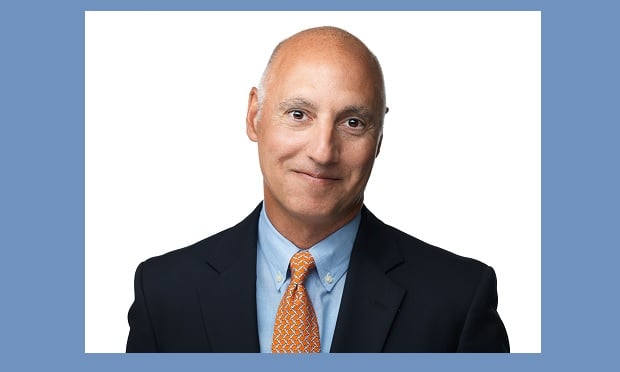For most of the nearly 30 years that I practiced law involvingclaims of personal injury (representing both plaintiffs anddefendants), a claim of injury due to a “slip and fall” usuallyfocused on one of two questions with regard to liability:
- |
- |
- |
- |
- When a foreign substance or object was the alleged cause, didthe premises owner have sufficient notice of the hazard to requireremoval of or warning of the presence of the hazard; or
- Was there a violation of a building code or other regulationwith regard to the premises that the owner failed to remedy whichwas the proximate cause of the fall?
- |
- |
- |
Arriving at an answer to either of those questions normally wasan issue of fact that rarely needed the testimony of one with anysort of scientific expertise.
|Times have changed. These days, the parties to a slip and fallcase turn to experts in the field that is referred to as HumanFactors Engineering or simply Human Factors. Many attorneys knowthat an expert in Human Factors can be employed to prove either aclaim or defense in a premises liability case, but they may notknow what scientific field qualifies someone to offer soundopinions in this scientific discipline. If an attorney in apremises liability case wants to find an expert to prove that thesubject premises either was or was not safe, using scientificexpertise as the grounds for their opinions, they must know whereto look for such an expert witness.
|Human Factors Engineering is a synonym for Ergonomics, andErgonomics is a sub-specialty of Industrial Engineering. In Augustof 2000, the International Ergonomics Association adopted thefollowing definition:
|“Ergonomics (or Human Factors Engineering) is the scientificdiscipline concerned with the understanding of interactions amonghumans and other elements of a system and the profession thatapplies theory, principles, data and methods to design in order tooptimize human well-being and overall system performance.”
|According to the Center for Ergonomics at the University ofLouisville, Speed School of Engineering, the three domains ofspecialization within ergonomics are described as cognitive,physical and organizational.
- |
- |
- |
- Cognitive ergonomics is concerned with mentalprocesses, such as perception, memory, reasoning and motorresponse, as they affect interactions among humans and otherelements of a system. This area of specialization includesinformation and research related to warning design andevaluation.
- Physical ergonomics is concerned with humananatomical, anthropometric, physiological and biomechanicalcharacteristics as they relate to physical activity. Many examplesof research and development in this branch of ergonomics can beseen in worker's compensation issues. The development of workstations with ergonomic designs, wrist and back braces for workersdesigned to reduce work injury and devices designed to dampenvibration of tools to cut down on development of carpel tunnelsyndrome are examples of what experts in this domain havecontributed to safety in human activity.
- Organizational ergonomics (also known asmacro-ergonomics) is concerned with the optimization ofsociotechnical systems, including their organizational structures,policies and processes. Examples of relevant topics encompassedwithin this domain are communication, crew resource management,teamwork, participatory work design, community ergonomics, computersupported cooperative work, virtual organizations and qualitymanagement.
- |
- |
In addition to degrees in Industrial Engineering with emphasisin Ergonomics/Human Factors, the qualified expert in a premisesliability case may be a Certified Safety Professional (CSP). Thedesignation is obtained through the Board of Safety Professionalsand requirements include both educational degrees and an experiencerequirement of four years in which at least 50% of the candidate'sprofessional activities were devoted to the prevention of harm topeople, property or the environment. Once a candidate for thecertification is deemed to be qualified, they must pass a safetycertification exam. An expert with the Safety Professionalcertification has added credentials to offer opinions regarding theappropriate and/or required safety measures that are to be taken atthe type of businesses that may be involved in a premises liabilityaction.
|Ideally, an expert with an advanced degree in IndustrialEngineering, with an emphasis in Human FactorsEngineering/Ergonomics and a CSP could offer opinions on most, ifnot all, of the liability issues to be addressed in a premisesliability case. Such scientific expertise is quickly becoming anessential part of proving both the claims and the defenses in suchpersonal injury legal battles.
|Click here to learn more abouthow DONAN® can find the right expert for yourcase.
Want to continue reading?
Become a Free PropertyCasualty360 Digital Reader
Your access to unlimited PropertyCasualty360 content isn’t changing.
Once you are an ALM digital member, you’ll receive:
- All PropertyCasualty360.com news coverage, best practices, and in-depth analysis.
- Educational webcasts, resources from industry leaders, and informative newsletters.
- Other award-winning websites including BenefitsPRO.com and ThinkAdvisor.com.
Already have an account? Sign In
© 2024 ALM Global, LLC, All Rights Reserved. Request academic re-use from www.copyright.com. All other uses, submit a request to [email protected]. For more information visit Asset & Logo Licensing.








